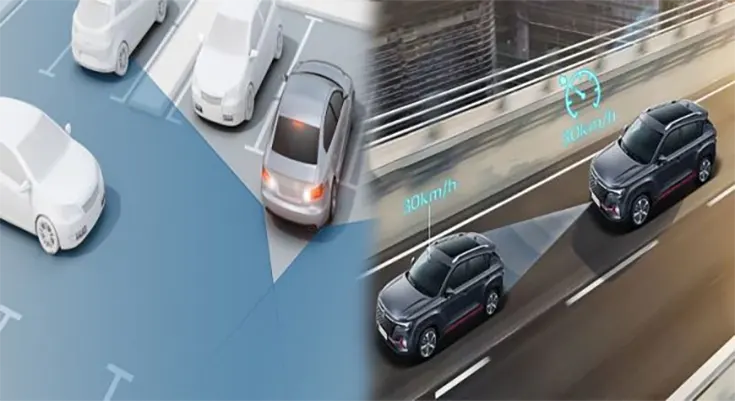Advanced safety features, also known as driver-assistance systems (ADAS), increase a car’s ability to detect and react to potential dangers on the road. They are a big part of improving car safety, especially in preventing crashes and fatalities.
Automakers are responding to consumer demand for these technologies by making them standard in more models and trims. But it’s important to note that these technologies won’t be as effective if drivers don’t use them or take the proper precautions.
Overview
Advanced safety features in cars help reduce the chance of car crashes by reducing human error and improving drivers’ awareness. They include technologies that can warn you of hazards or take over control of your vehicle to avoid them, according to the Insurance Institute for Highway Safety.
ADAS (Advanced Driver Assistance Systems) are increasingly available on more vehicles than ever before, and they’re quickly making an impact on traffic safety. They use cameras, radar, sonar and other sensors to detect potential hazards.
Some ADAS technologies can prevent collisions, such as blind-spot warning systems and automatic emergency braking. Others are intended to improve a driver’s awareness of upcoming obstacles, such as adaptive cruise control.
While these features can make driving safer, they are not without their limitations. For instance, lane departure warning systems struggle to work in low-light conditions or on roads with poor lane markings.
Importance
Advanced safety features in cars are becoming more and more common, with many of them a standard feature in new vehicles. They’re designed to make you safer while on the road, which helps to reduce accident and injury rates and can save you a bundle in deductibles and car insurance premiums.
For example, a lane departure warning system will sound an alert, display visual cues and even gently steer your car back into the lane if you’re accelerating out of it without signaling. Similarly, a blind-spot monitoring system will warn you if a vehicle is in your rear-quarters or to the side of the vehicle that you can’t see with your normal view.
Adaptive cruise control is another convenient convenience that uses radar and camera modules to alter your set cruising speed when it detects a slower vehicle ahead. It can also bring your vehicle to a stop when traffic slows down and then resume driving on its own once the traffic picks up again.
Impact
Many of the latest features in cars are influenced by the desire to improve safety on the road. Car manufacturers understand this, and they respond to consumer demand by improving these features and making them standard on more models and trims of cars.
For example, adaptive cruise control is now a feature on more vehicles than ever before. This technology uses your vehicle’s cameras and radar to automatically adjust your cruising speed, keeping you safely within the speed limit and avoiding accidents.
Another safety feature is automatic steering, which can keep your car in its lane even around slight curves. It can also bring the car to a complete stop in bumper-to- bumper traffic or at red lights, before restarting again.
Other driver-assistance systems also qualify as safety features, such as blind-spot monitoring and rear cross-traffic warning. These systems alert drivers to other cars in their blind spots and may even display an image of what’s ahead on the dash, depending on the system.
Future
Advanced safety features in cars can prevent crashes and improve driver performance, but they can’t be effective unless drivers use them. This is why automakers are increasing the availability of advanced safety features and making them standard on more vehicles.
Cars already have a lot of crash avoidance technology, including forward collision warning (FCW) and automatic emergency braking (AEB). FCW systems monitor your speed, the speed of the vehicle ahead of you, and the distance between them to alert you to an impending collision, giving you time to brake or take an action that could reduce the impact.
Blind spot detection uses either digital cameras or sensors to warn drivers that a vehicle in an adjacent lane may be in their path. It sends visual, audible or tactile warnings depending on the manufacturer.
Some ADAS systems can also make driving easier by keeping your car in its lane or automatically steering you around traffic jams. However, some features can have limitations or are only effective on certain roads. For instance, pedestrian detection is effective during the day but can struggle in low light or in inclement weather.

